- Destinations
- Travel Styles
- About Us
- Contacts
- Destinations
- Travel Styles
- About Us
What are the Vietnamese drinks you have ever tasted? Indeed, because of the wide variety of fruits and fresh ingredients found in Vietnam, there exist many mouth-watering and refreshing drinks. It is not a good practice to treat them as a way to rehydrate and refresh oneself on an adventure. Indulge in an entirely personal experience of taste through discovering the wonderful different aspects of Vietnamese drinking and enjoy letting yourself go in the exotic and fascinating flavors of this amazing country.
Vietnamese drinks are mainly tropical fruits such as coconut, orange, or mango; herbs and even rice contribute to these drinks. The resultant drinks, usually made from fruits and herbs, supplemented with rice, have an oriental influence that was usually derived during the feudal period. Hence, the drink may also serve as a refresher and a promoter of health through the herbs used in making it.
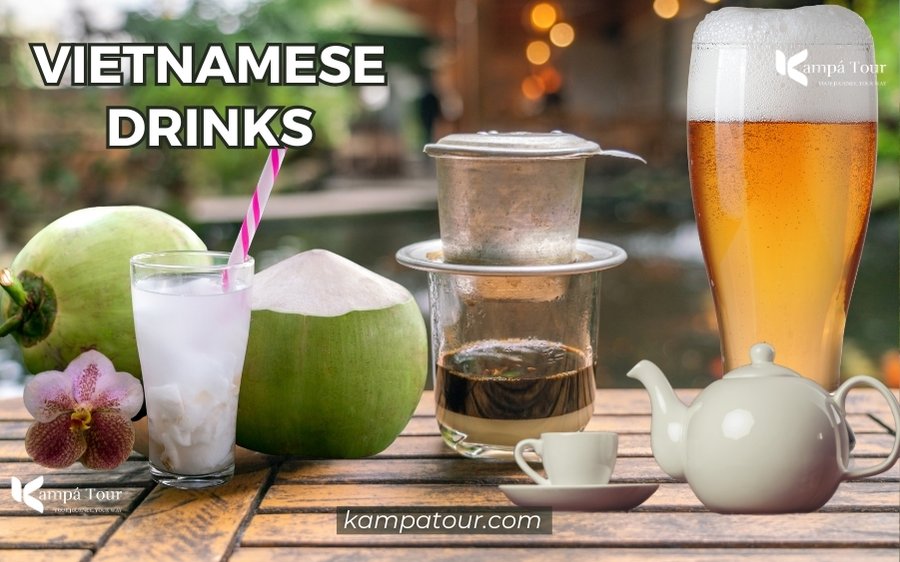
Below, we will tell you about the 10 Vietnamese drinks and their values in Vietnamese culture:
This beverage brings people together, since, as an original saying goes, "Chén trà là đầu câu chuyện - Break the ice", a good cup of tea is the beginning of a good conversation. Therefore, tea, as a traditional drink among Vietnamese people, must exist in the most important aspects of life, such as marriages and death.
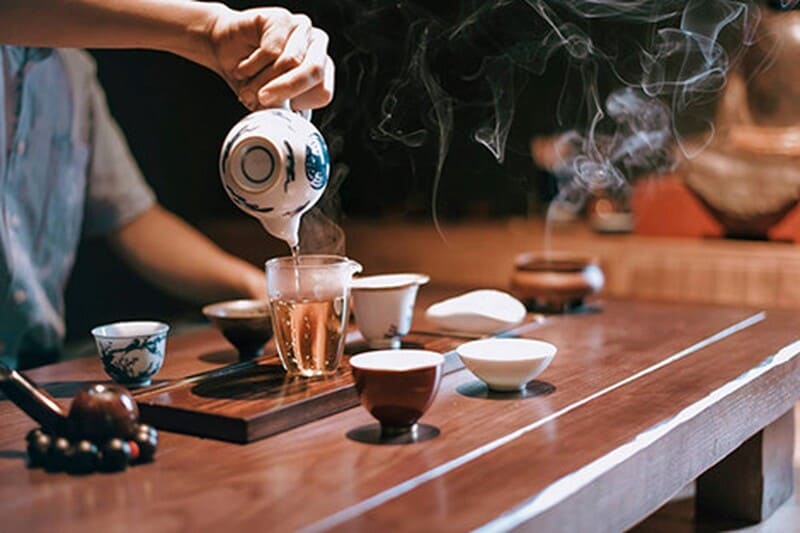
Iconic in Vietnam is lotus tea, which makes use of the national flower of Vietnam; lotus tea is made by mixing dried petals with green tea leaves. The method of preparing lotus tea is lengthy and complicated, with many processes of drying and liquidizing, all to achieve the perfect balance in flavor. This tea flavor is most commonly given by the Tay Ho lotus variety for its light scent and numerous wings.
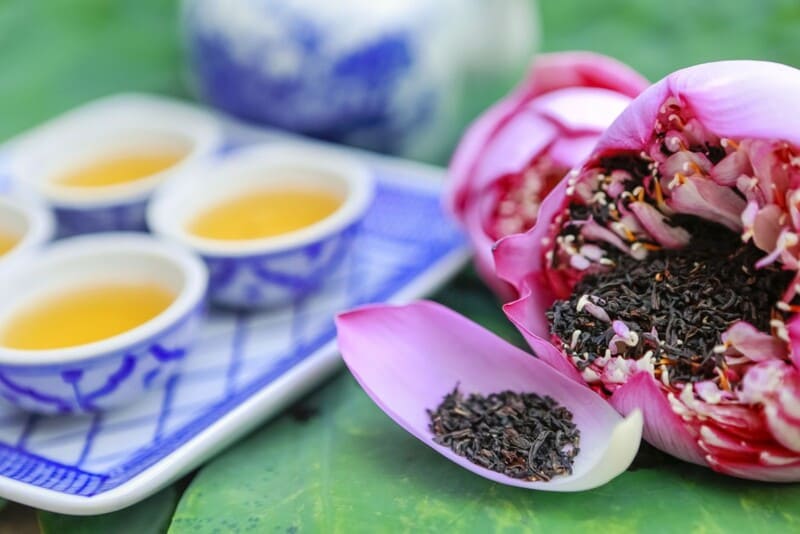
While lotus tea claims to be the quintessence of Vietnamese culture, iced tea, on the other hand, is part of the daily lives of people, found in street corners as well as grand restaurants. This is the most popular and most enjoyed street drink in Vietnam. Though it is so popular, it can be found in small street stalls and in coffee shops at different levels.
Prized for its simplicity, iced tea is lemon or kumquat-flavored, sweetened, and garnished with these fruits. Young people especially love this experience to hang out with friends. Trà chanh goes well beyond the drink; it is a social experience, particularly in Hanoi. Pouring a few thirst-quenching gulps of lemon tea (or kumquat) into the mouth immerses one fully into the experience of youth living in the local context.
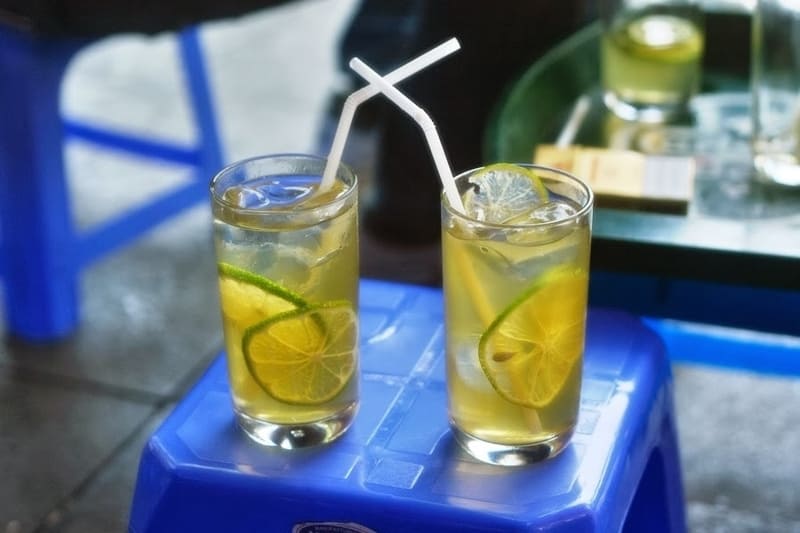
>>> Read more about Vietnamese Tea
Vietnam is the second largest coffee exporter after Brazil, which makes it a must-have drink when traveling around. There is café Vietnam on every street: from sidewalks to luxury shops; that is what it is, everything, because it is easily found. This makes it very different from coffees from other countries in terms of special aroma and stronger savor.
A daily filter coffee routine for locals is also the best way to experience the taste. A small metal filter is prepared, where ground coffee and hot water are put.
.jpg)
The water slowly seeps into the coffee before it drips into the glass, thus providing a very complex yet rich flavor. The manual technique allows you to control the speed of water flow in order to adjust the concentration according to your preference.
For instance, it is enjoyable to hang on the sidewalk of a street, chatting with friends, with a nice cup of Vietnamese coffee. But if you cannot enjoy a black cup of coffee, it is ideal to drink coffee with condensed milk and ice.
.jpg)
If you want to experience something weird and really typical of the capital city of Hanoi, then you should try egg coffee, cà phê trứng, a drink that dates back to war times when food ingredients were scarce. The fresh egg yolks are whisked with milk and sugar and then poured directly into hot black coffee for a dramatic bright gold froth. It is sweet and creamy, very popular with locals, and can be found only in a few spots in the city.
>>> Explore Coffee Culture in Vietnam
Bia Hoi, or cold beer, is a typical street drink all over Vietnam. This drink is everywhere in breweries, from the most frequented to the super luxury ones. There are many brands of Vietnamese beer, such as Saigon, Hanoi, Hue, and Da Nang, but fresh Bia Hoi is the best known. The price and quality of beer vary according to where it is sold, from sidewalk cabarets to upscale bars. Drinking beer has become a lifestyle among Vietnamese.
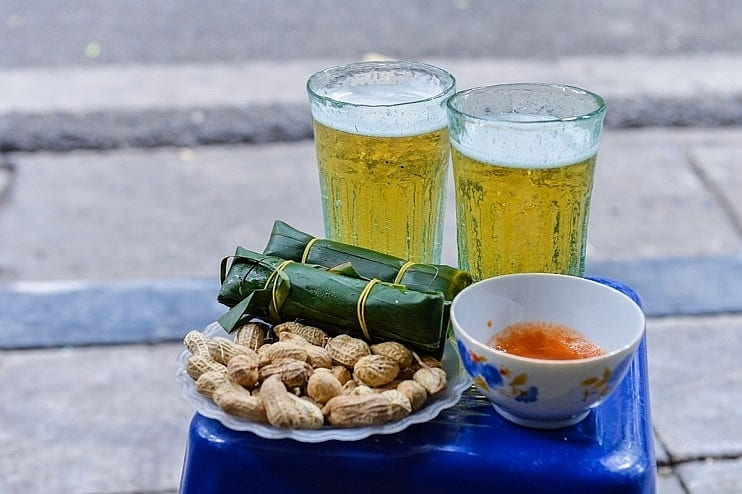
And cold beer, for example, speaks volumes culturally. Beer is served alongside meals. A visit to a brewery should see you walk in knowing that no matter your class, everyone is comfortable with the buzz of life.
Should you happen to find yourself in Hanoi, you should not miss "beer corner" in the Old Quarter, at the intersection of Ta Hien and Luong Ngoc Quyen. You will find little plastic tables and chairs lining the busy sidewalk, which is quite close to local culture, unlike the affluence of the bigger restaurants.
If you're in Ho Chi Minh City, then definitely don't miss Bui Vien street in the bustling Pham Ngu Lao district. It's one hot spot among tourists and locals for having a cold beer while soaking in the ambience of busy streets.
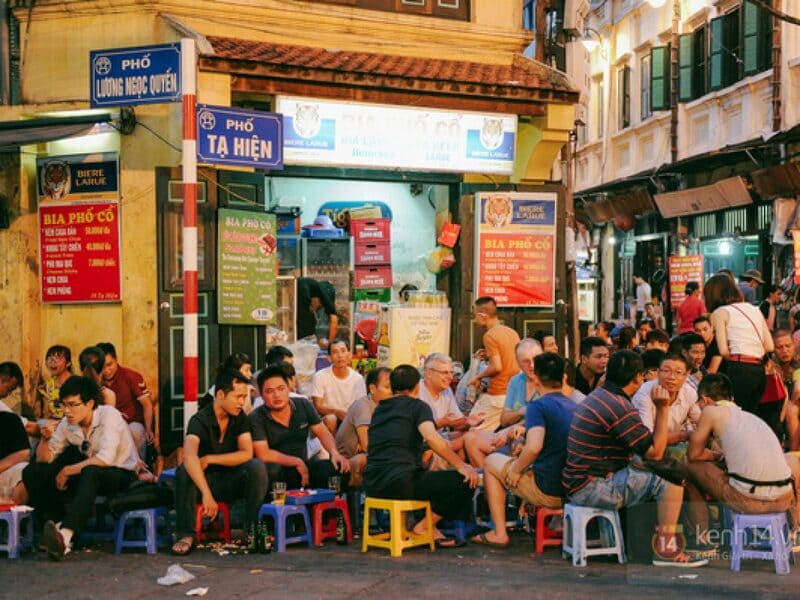
>>> Don't miss the Vietnamese Beer aka Bia Hoi!!!
Commonly made in small batches from glutinous rice or corn (ruou gao or ruou ngo in Vietnamese), ruou is the traditional Vietnamese liquor that is truly representative of Vietnam as a people. Ruou is symbolic of the culture, often present at social events such as weddings, birthdays, and funerals.
The drink is served in fairly short glasses measuring about 4 cm high, and often with a high alcohol content; therefore, moderation should be exercised if you have low tolerance levels towards alcohol.
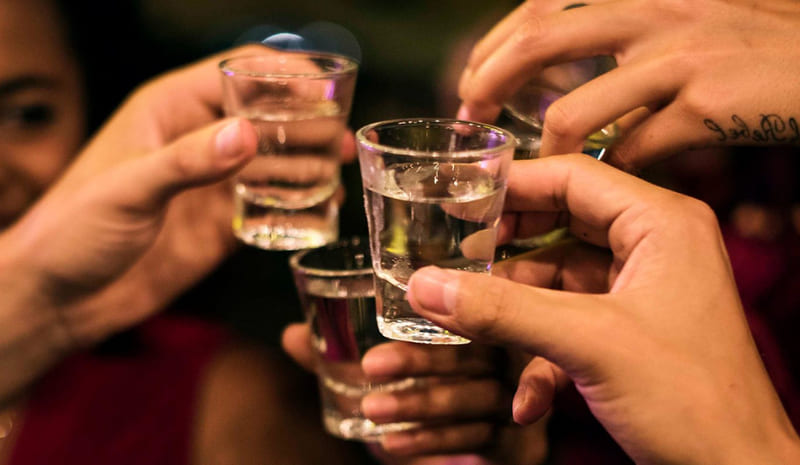
In some mountainous areas, it is common for people to drink Ruou Can, a type of ruou stored in a large jug and consumed with bamboo straws, made with local herbs to impart a unique flavor.
In Ha Giang, Sapa, and above all, Bac Ha, the Hmong prepare corn wine, a traditional drink of the Hmong ethnic group, by hand. This wine has a sweet and rich taste and aroma, with a slight alcohol graduation of 20-40%. It is easy to drink and does not usually cause headaches, but it should be consumed in moderation.
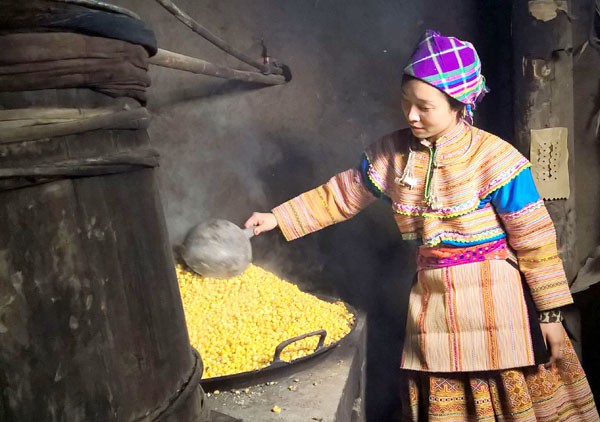
Discover More About the Culture of the Land of Corn Wine:
MOT herbal tea is an exclusive drink of the very ancient and sacred town of Hoi An in Quang Nam Province. It is composed of tea with several herbs, including lemon, lemongrass, and cinnamon herbs, plus other undisclosed components.
It has the flavor of lemon tea intact but is much more fragrant and richer in taste. The cups for MOT herbal tea are made from paper, and the straws used are bamboo. The delightfulness of the beverage is also enhanced with a sprinkle of tea leaves and fresh lotus petals. "Nuoc MOT" is that melodrama as it neither exists nor can be found anywhere else in the world.
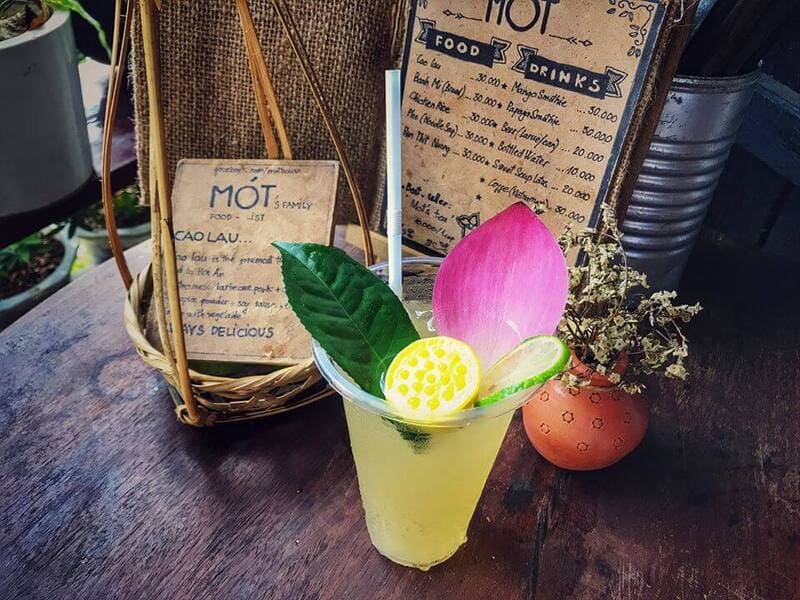
>>> Make Sure to Visit Hoi An in Vietnam: Read More!
This is due to the rich varieties and abundance of tropical fruits across the country. Thus, fruits are a must for drinking.
Smoothie, or Sinh tố in Vietnamese, is a blend of fruits with milk and ice which has been pureed. The most popular types of smoothies are mango smoothie, soursop (mang cau), avocado, and fresh fruit varieties, etc.
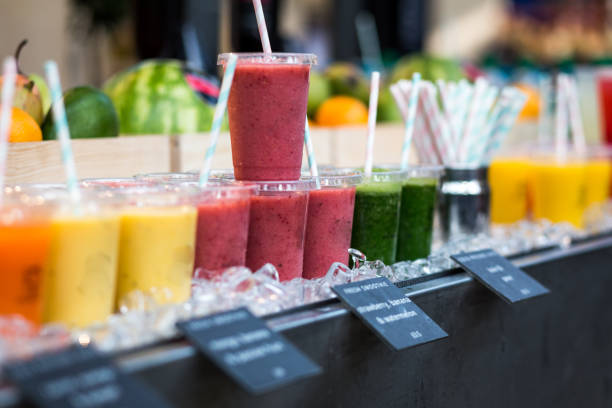
Fruit juices are also super popular in Vietnam because of the friendly temperature. It is a refreshing drink, best not ignored. Some of the most common fruit juices are as follows: orange, grapefruit, guava, starfruit, carrot, tomato, pineapple, passion fruit, amongst others.
Sure, if you want to have some fresh fruit juice, go to the stalls in Vietnam where you can choose the fruit on your own to mix into your juice.
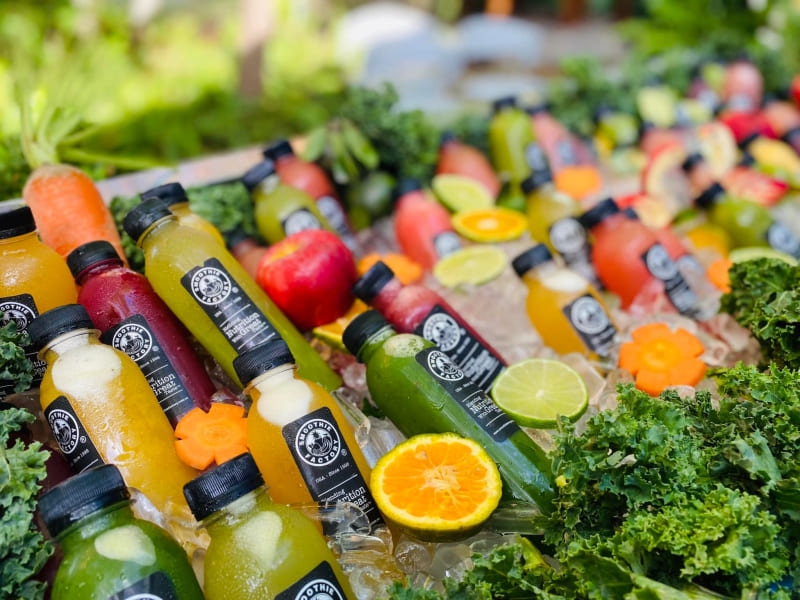
Among the original drinks in Vietnam, nothing can beat coconut water. It is much savored during the summertime, with street vendors selling fresh coconuts and serving pure, fresh water directly from the coconut itself so that freshness and flavor can be preserved in the drink.
Coconut trees flourish in most parts of the Mekong Delta, but the city famed as the "Coconut Kingdom" is Ben Tre. Freshly pressed coconut water is a real treat, whether you're wandering the bustling streets of Saigon or relaxing on a beach that looks straight out of paradise, like Phu Quoc Island.
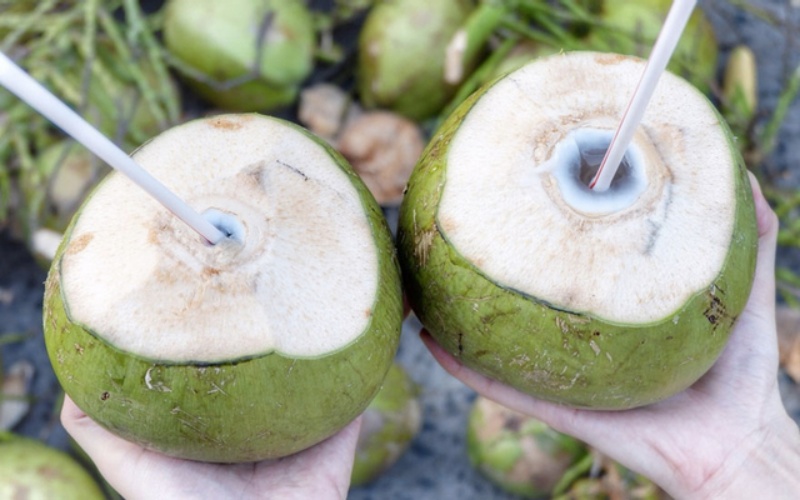
Sugarcane juice or nuoc mia is an inexpensive drink that has no way of being missed on a trip around Vietnam. It's missing in many countries around the world. Sugarcane juice is squeezed from the stem, then some kumquat or pineapple is added to it and served over ice.
You will feel great consuming this drink because it is prepared right before you on mobile sugarcane presses. It costs about 10,000 VND.
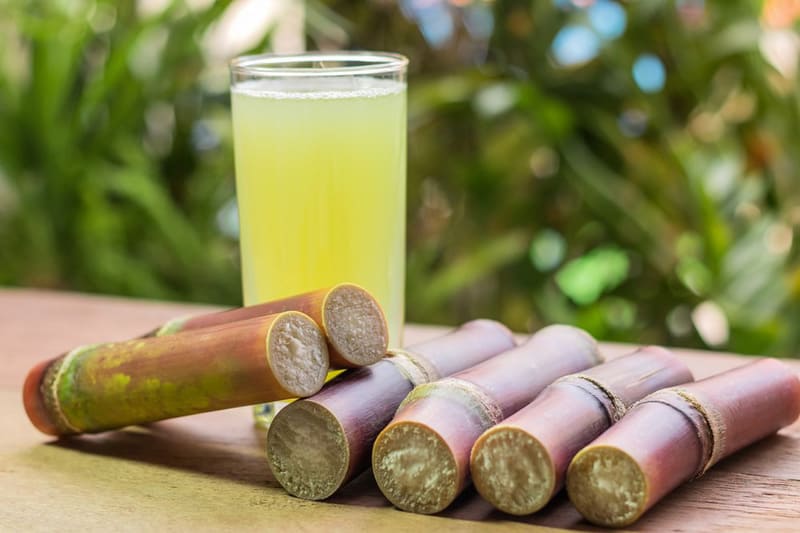
A highly favored herbal beverage found in Vietnam is herbal tea or Nuoc Sam. It is prepared with a medley of medicinal herbs commonly used for culinary purposes, such as pumpkin, sugar cane, longan, and seaweed.
These ingredients are well-established for their safety and their functions in fighting inflammation, reducing body heat, and boosting the immune system. Feverfew flowers are often included as a flavor enhancer and to improve the health benefits of the drink. The drink is usually sold on sidewalks everywhere, especially in the south, in Ho Chi Minh City.
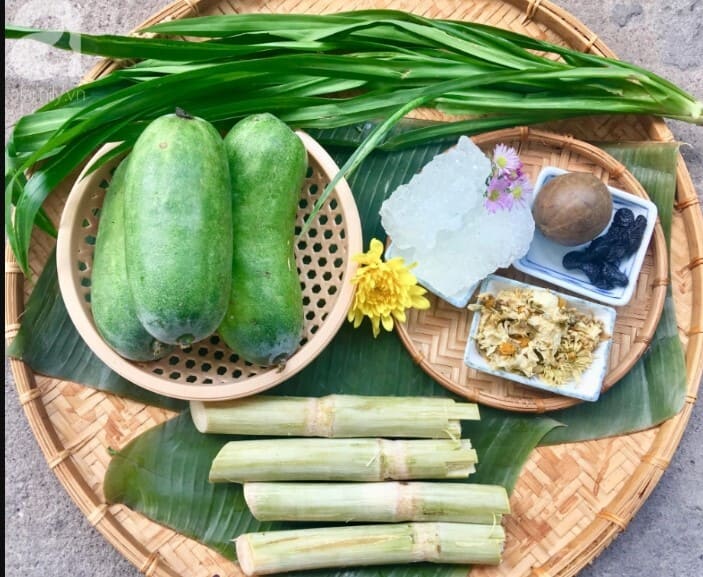
Most drinks, even beer, from Vietnam mostly come with ice. Before this, people in Vietnam were not used to drinking cold beverages, and since there were no refrigerating systems in those days, room temperature drinking is what they used before pouring over ice because it is so humid and hot in the south of Vietnam; a warm beer or a soft drink won't cut it.
Generally speaking, guidebooks will advise you against taking ice on all your travels in Southeast Asia. However, one thing about Vietnam is that ice in Vietnam is not that unsafe. It has many sanitary ice factories in Vietnam, from small to large-scale companies that manufacture ice using filtered water and package it without any human touch. To add to that general rule, if the ice you are being served has a hole in it, then it's been made by a machine and is likely to be safe.
You should be extra careful when consuming things that are or can be crushed ice, since ice is always brought in large blocks and then crushed by hand (and it's the same hands you have to worry about). If your system is very sensitive or you have just started to travel internationally, then I would advise you to stay far away from the crushed ice.
Well, drinks, like Vietnamese foods, are diverse and unique. They usually vary from region to region, depending on the climate and nature that surround them. Although they are sold in many parts of the world, when coming to Vietnam, they bring a different flavor that can only be experienced on your trip to Vietnam. So, hopefully, your dining experience will be even more varied thanks to the Vietnamese drinks we've featured.
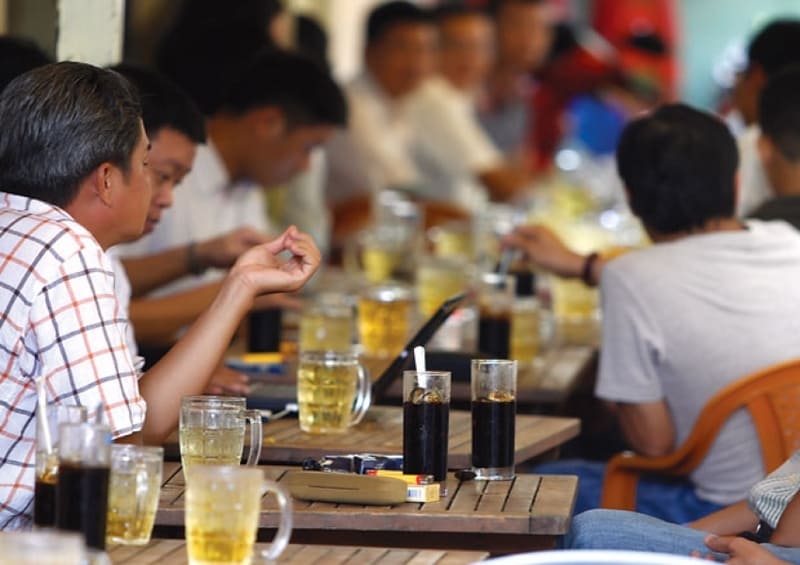
💡Related Posts:
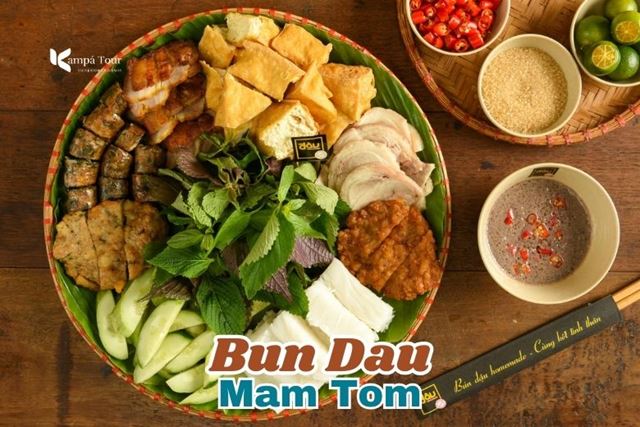
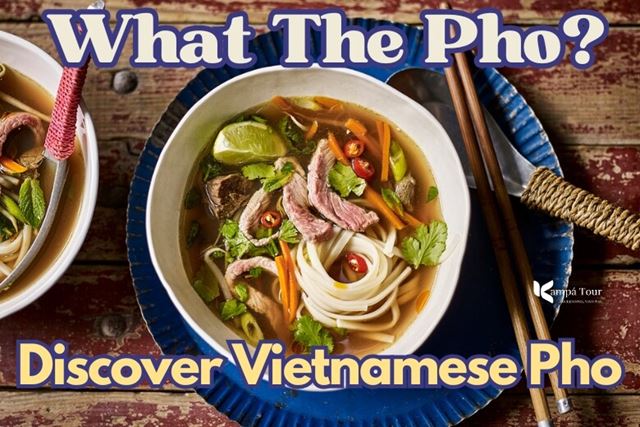
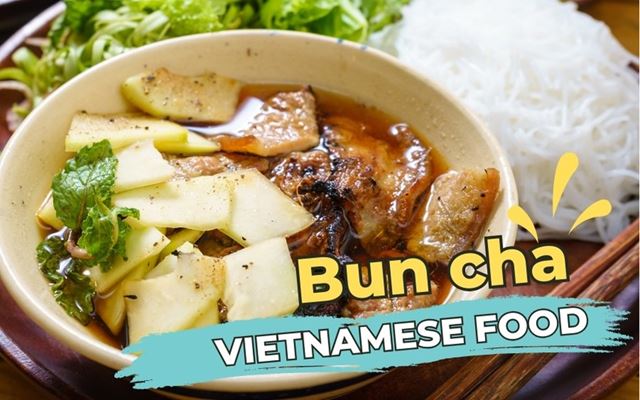
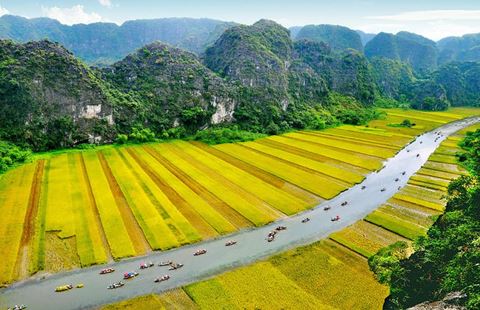 The must-sees
The must-sees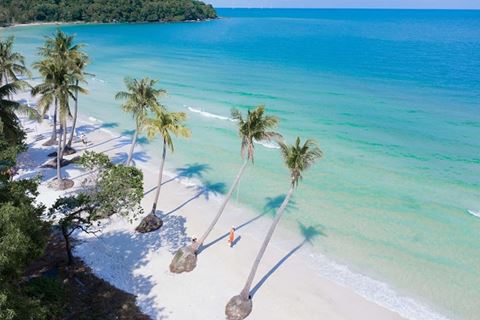 The Essentials
The Essentials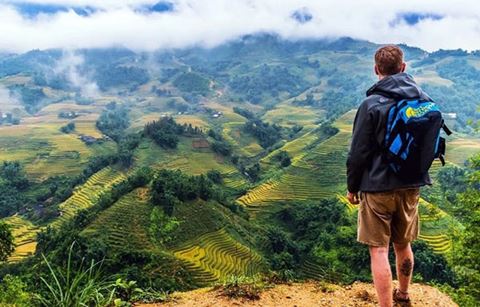 The Essentials
The Essentials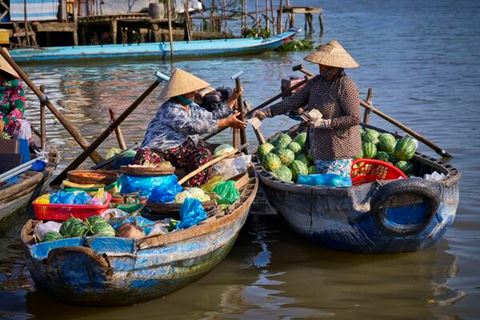 Vietnam Family Tours
Vietnam Family Tours